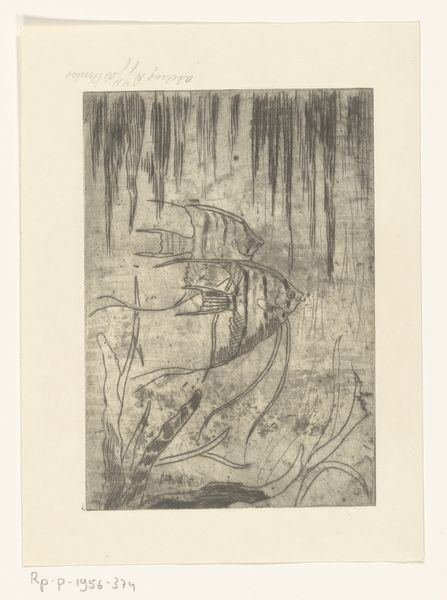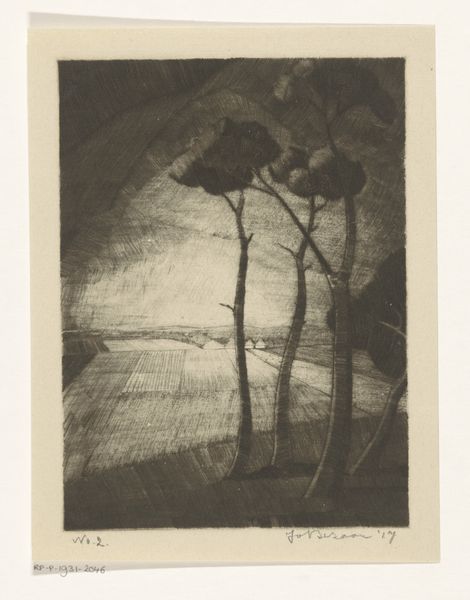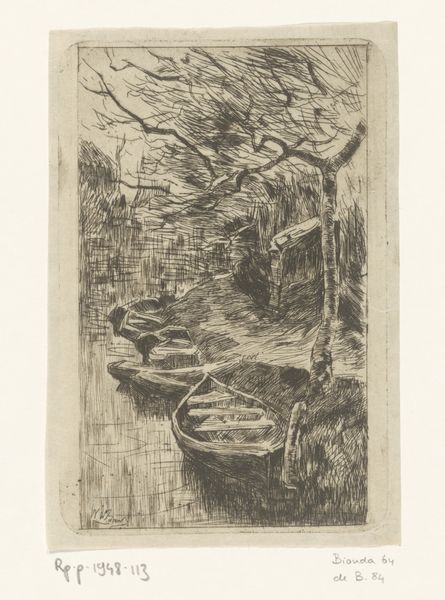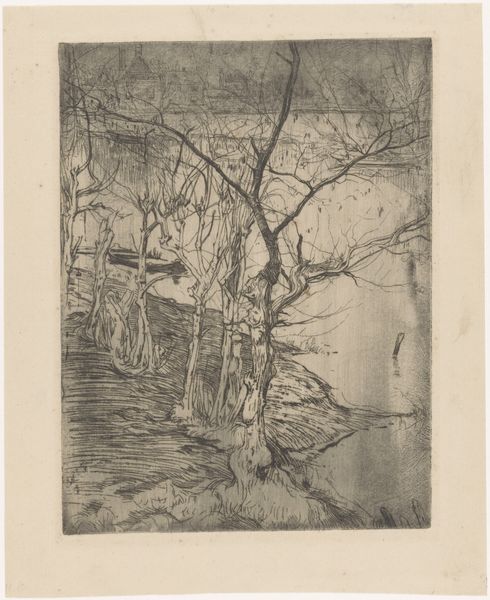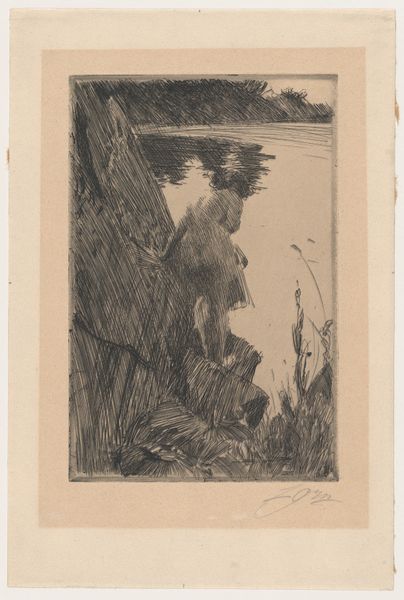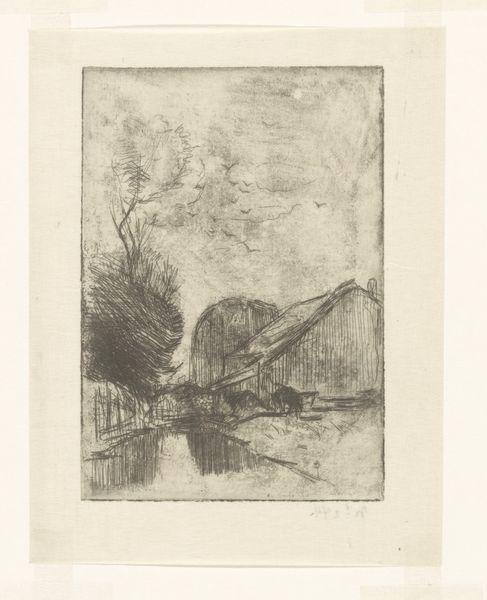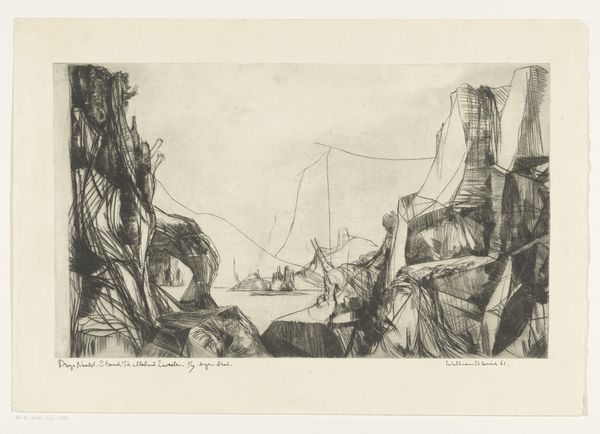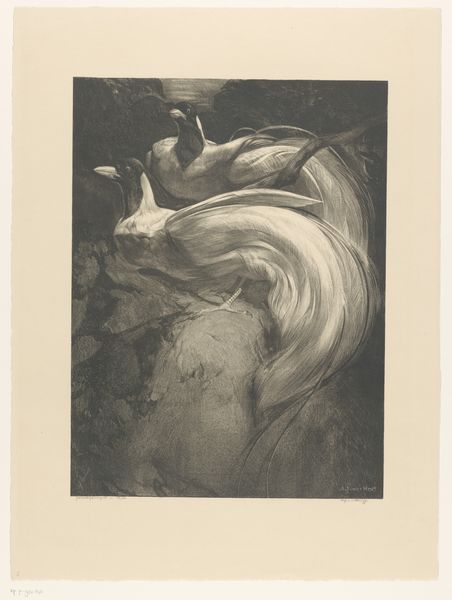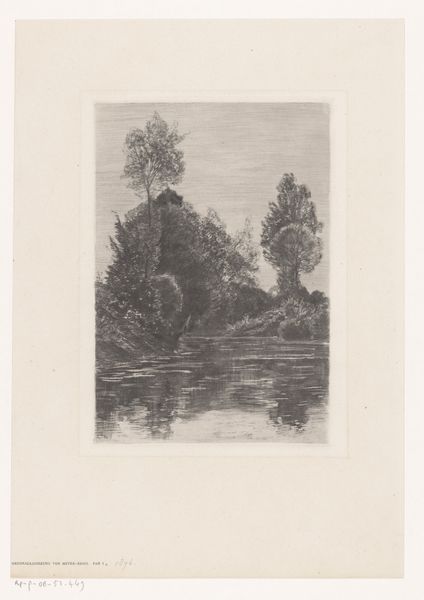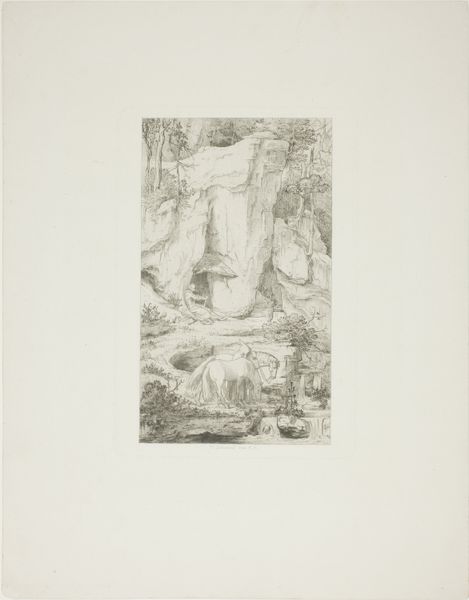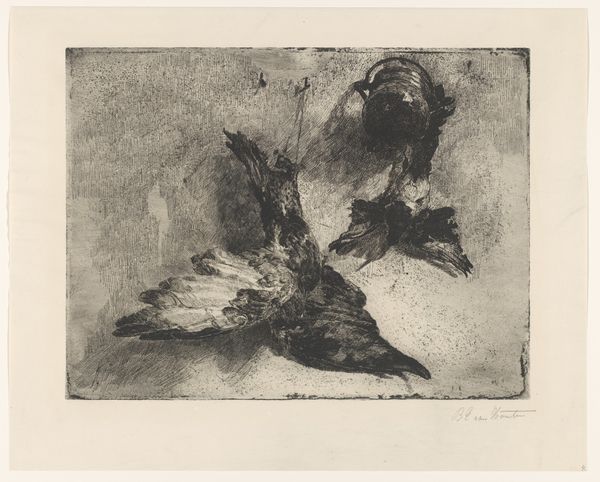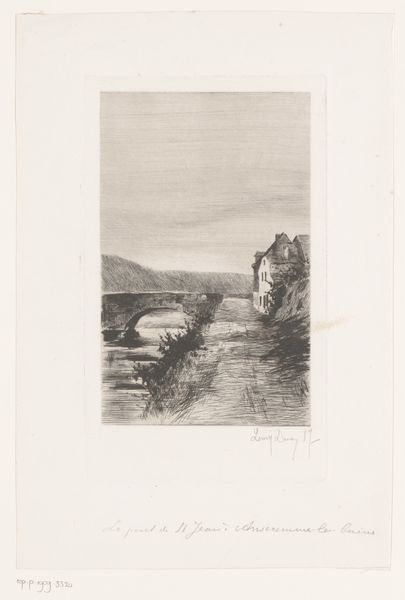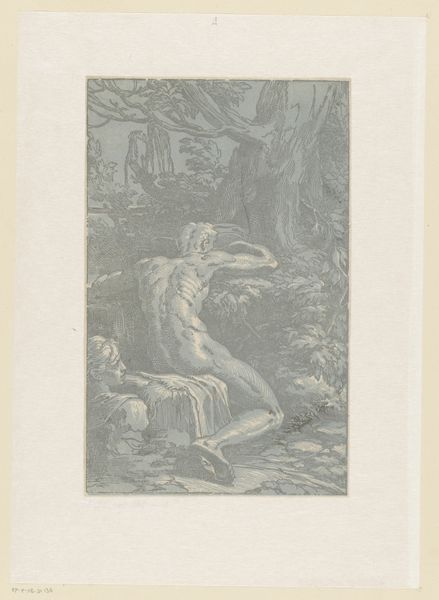
print, etching, paper
# print
#
etching
#
landscape
#
paper
#
realism
Dimensions: height 312 mm, width 241 mm, height 425 mm, width 300 mm
Copyright: Rijks Museum: Open Domain
Curator: This etching by Theo van Hoytema, "Pond with Duck," made sometime between 1878 and 1914, is a delicate meditation on water and light. The piece employs the print medium on paper, bringing us an intimate glimpse into a quiet pond scene. Editor: Immediately, I'm struck by its calmness, almost stillness. The limited tonal range gives it this dreamy, melancholic air. The composition, with the solitary duck and the skeletal tree, it feels so…reflective. Curator: Absolutely. Hoytema, known for his lithographs, seems to have drawn from the tradition of Japanese prints that became popular in the latter part of the 19th Century. This quiet contemplation of nature reflects a cultural moment where there was an increased appreciation for the natural world. The duck, often a symbol of adaptation, navigates this liminal space, the surface of the water being between worlds, so to speak. Editor: And the tree looming over the duck; there's a strong contrast there. While the duck is sleek and self-contained, that tree is gnarled, like a sentinel. Is the duck vulnerable or simply at peace in the face of the raw natural order? I keep coming back to the symbolic contrast. Curator: Precisely! It plays with the duality. The duck, symbolizing purity and grace, contrasts with the roughness and age represented by the tree. It subtly critiques human interference by positioning untouched nature – the pond – alongside the duck that is hunted, signifying that there is something natural about taking advantage. It suggests the social commentary prevalent at the time. Editor: That commentary would be expected at that time. And to return to the composition, I find the balance captivating: the way the duck anchors the foreground while its reflection distorts the lower half—then that stark contrast as our eye lifts towards the organic growth, suggesting life persists beyond the still pond and the duck. Curator: It makes you question. Where is this balance? Was the print created to be purely a symbol of serene life or a silent political gesture in times of environmental ignorance? These are conversations to consider when looking at a historic piece of work. Editor: I agree, especially since visual languages constantly transform; that balance has since tilted to reveal environmental activism, and now that same artwork feels quite at home. A lovely and subtly thought-provoking piece overall.
Comments
No comments
Be the first to comment and join the conversation on the ultimate creative platform.
